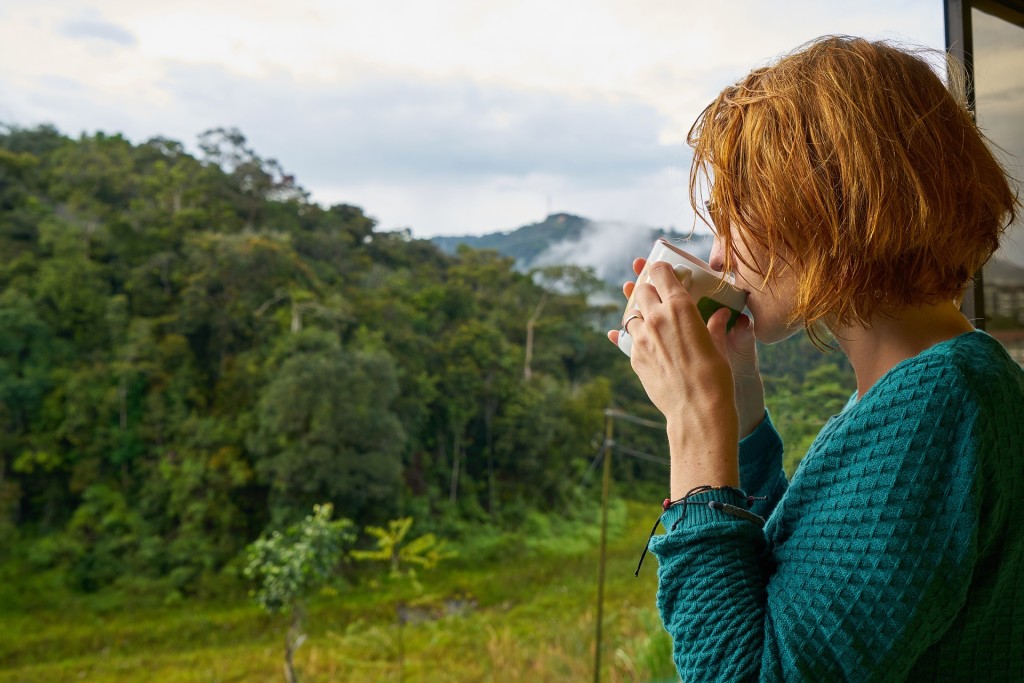Along with the joys of the holidays, there may be quite a bit of stress. Though it may not seem like it, this could be an exciting opportunity for growth. Taking a few moments during this season to learn to relax from the higher level of stress will make it that much easier to relax when the holidays have passed and we’re back to normal everyday tension.
Most of the stressors that we experience throughout the day are not ones that we can either fight or flee from. What this means is that we tend to freeze. Without even e it, we go from the stress of the commute, to the stress of the job, to the stress of home in a frozen state.
What this looks like is that we breathe shallowly. We tend to only breath into the chest, just enough to carry on, but nothing extra to bring in greater energy, or remove more waste products.
Try something right now- take a deep breath in through the nose and let your abdomen fill with air. Then, take another deep breath in through your nose and this time let your chest expand- imagine pushing the ribs apart with your breath.
Was that different than you were breathing before? Do you feel a little more relaxed and/ or energized after taking those deep breaths? If you’re like most people, you probably didn’t even notice that you weren’t breathing deeply before trying that.
The other thing that happens physically when we freeze is that we hold tension in our muscles, often without even knowing it. Experiments have shown that our muscles may be constantly having tiny movements. This was observed through a machine that measures microscopic muscle movement. One subject was asked to imagine rowing a boat. Despite the subject’s apparent stillness, the machine recorded tiny movements in those muscles that would be involved in rowing a boat. You may not realize that your muscles are active until you experience the effects of tension and fatigue.
This is when stress becomes noticeable to us- when we feel tired and worn out. We may not be able to change stressful circumstances, but thankfully, we always have the power to change how we respond. We can teach our bodies to relax. This not only has an effect on how we feel physically, but can also help us to take control emotionally. The first step is to notice when and where we are holding tension. Doing relaxation exercises- such as the one below- allows you to feel where you are tense. It also helps you to do the next step which is to relax the muscles. By doing a practice like this each day, you not only give your body a break from the stress response, but you also start to notice what relaxation feels like. As you go about your day and automatically have the reaction of freezing in response to stress, you will actually notice the difference between that frozen feeling and the relaxation you experienced during the exercise.
I’m excited to think of the changes that you will experience as you work with your body towards relaxation and self-discovery. Remember, the first step is just to let your body relax. So, try the Relaxation Process described below, reading through and then doing it with your eyes closed.
Relaxation Process
The first step towards relaxation is to feel the difference between the relaxed state and our more common habit of holding muscle tension. Follow this exercise which helps you to feel that difference and allow your body to let go.
Start by slowly taking a few deep breaths in through the nose and imagine the breath filling the abdomen and going into each part of the body. Do this until you start to feel the tension fading. It helps to give the breath a color, like golden yellow, and then imagine filling each part of your body with that color. Picturing the body helps to engage parts of your brain not involved with thinking, in order to give your thinking mind a break.
When you are ready, slowly tense and release each part of your body, starting with your toes and going all of the way up to your face. By tensing and then releasing each part, you feel the difference between the state of muscle tension and the relaxation as the muscles release.. Continue to do this until all of the muscles in your body have tensed and released.
Continue to breathe and enjoy the relaxation for as long as you desire or allow yourself to drift off into sleep.
When you decide that you are ready to come out of this relaxed state, slowly wiggle your fingers and toes and then roll your arms and legs, feeling energy returning to each part before getting up slowly.
Try to remember how this relaxation feels and then notice when you start to tense during the day, bringing yourself back to this relaxed state once again.
–
Dr. Alicia Maher is a board certified diplomate of the American Board of Psychiatry and Neurology. You can schedule an appointment by calling 310-451-8880 or emailing us at info@akashacenter.com

















